Pancakes are traditionally made with butter, but there are ways of making them without butter or with butter substitutes.
I sometimes don’t have butter in the fridge or have very little and want to save it for later, so I’ve been experimenting with different types of butter substitutes for pancakes.
It’s surprisingly easy to replace butter in pancakes, since there is usually only small amount in. Depending on what butter substitute you choose you might not even notice any difference in taste or texture of your pancakes.
The butter substitution is most noticeable in traditional pancakes, but if you choose more modern recipes you probably won’t even find butter mentioned in the recipe ingredients.
So, if you are looking for alternatives due to dietary preferences, health concerns, or simply a desire to experiment with new flavors, here are my top choices to replace butter in pancakes.
There are many butter substitutes available, so it is important to understand which options work best for pancakes while maintaining their fluffy texture and delicious taste.
PIN TO KEEP FOR LATER

What’s the best butter substitute for pancakes? The quick answer
There are several substitutes for butter that can be used in pancakes, and the best one depends on personal preference and the recipe being used. Most popular substitutes for butter in pancakes include: Oil (Vegetable oil, canola oil, and coconut oil), applesauce, Greek yogurt or mashed bananas.
Which substitute most closely resembles butter taste?
Some butter substitutes that closely resemble the taste and texture of butter are margarine, ghee (clarified butter) or plant based butter. These substitutes can be used in similar amounts to butter and your pancakes will taste very similar to the original recipe.
I’ve also successfully used thick double cream instead of butter and the pancakes flavour was amazing! I often make homemade butter from cream or milk, so using just the cream instead of butter is the most obvious choice.
PANCAKE RECIPES

How important is butter in pancakes?
Butter is not essential in pancake recipes, but it can play an important role in the flavor and texture of the pancakes. Butter adds richness and flavor to the pancakes, and can help to create a light and fluffy texture. However, there are many pancake recipes that use oil or other substitutes instead of butter, and these recipes can still produce delicious pancakes. I think, that the only pancakes where the butter is really good to have are the traditional pancake recipes with no fancy ingredients or flavours, because the flavour of the butter really comes out in those.
It’s entirely up to you if you use butter in a pancake recipe or not, the recipe will still work if you replace it with something else or leave it out completely.
Can you leave butter out of pancakes?
Yes, you can leave butter out of pancake recipes and still make them taste good. Butter is usually listed as an ingredient in many pancake recipes, but it can be always left out, if you want to.
There are many pancake recipes that use oil or other substitutes instead of butter and many healthy pancake recipes, don’t use any fat at all and the recipes still work fine.
So, it’s perfectly fine if you want to leave out the butter from your pancake recipes for health or dietary reasons or because you’ve just run out of butter all together.
What quantity do I need to replace butter in pancakes?
The amount of oil or other butter substitutes needed to replace butter in pancakes can vary depending on the recipe and your preferred final taste of texture of your pancakes.
But as a general rule of thumb, you can replace the butter in a pancake recipe with an equal amount of any butter substitute.
For example, if a recipe calls for 1/3 cup of melted butter, you can use 1/3 cup of oil instead.
PANCAKE RECIPES
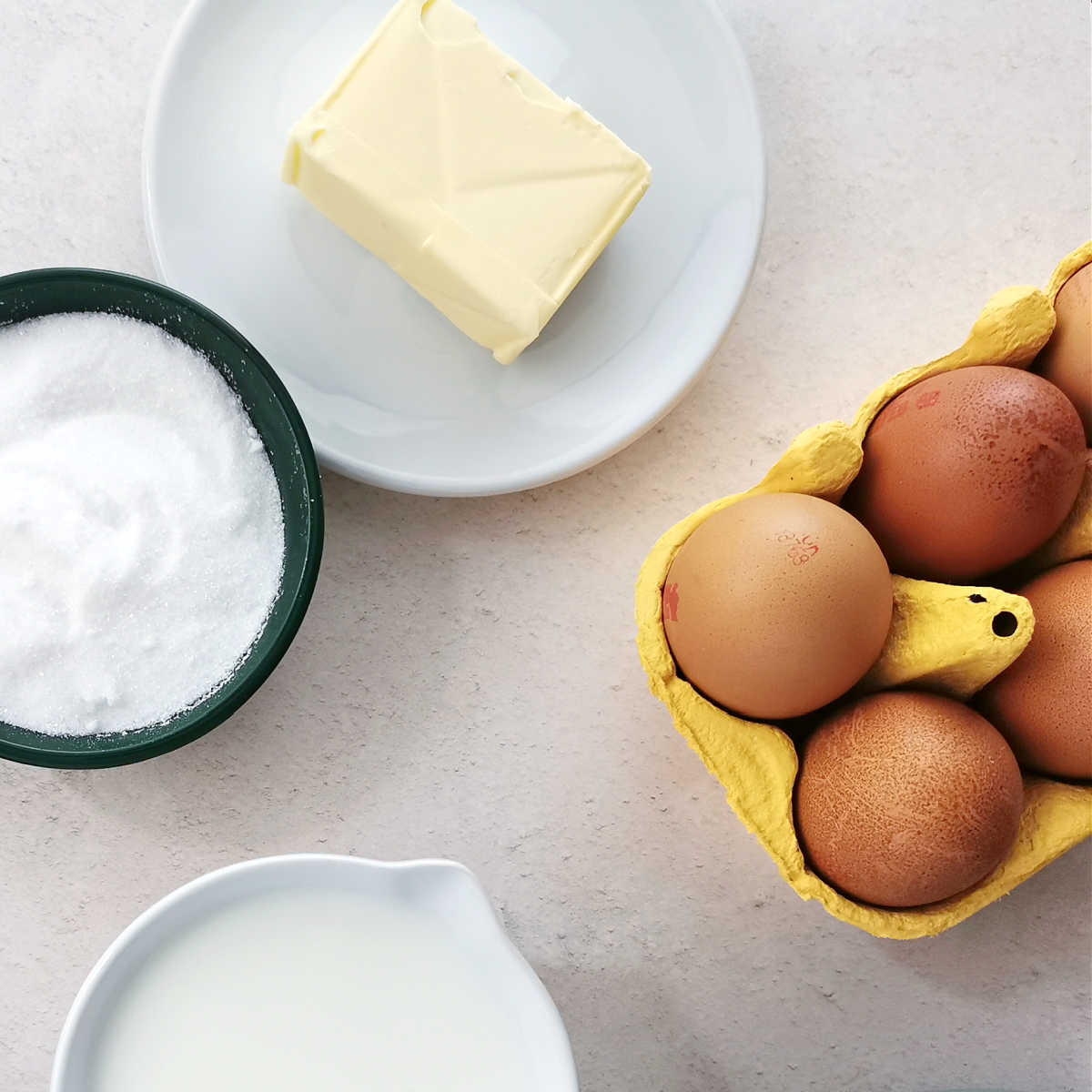
Traditional butter substitutes for pancakes
- Oil – vegetable or sunflower oil (rice oil, nut oil or any unflavored type of oil)
- Olive Oil (not too strong in flavour)
- Buttermilk
- Double Cream (Heavy Cream)
- Lard
- Ghee (clarified butter)
- Margarine
Healthier butter substitutes for pancakes
There are several healthy butter alternatives for pancakes, such as olive oil, coconut oil, and applesauce. Olive oil is a heart-healthy option with a 3:4 substitution ratio for butter. Coconut oil, which contains medium-chain fatty acids and immune-boosting properties, is another wholesome choice. Applesauce can also be used as a butter substitute but may result in softer pancakes.
- Coconut Oil
- Avocado
- Banana (Mashed)
- Applesauce (unsweetened)
- Olive Oil
Unusual butter substitutes for pancakes
- Double Cream (Heavy Cream)
- Mayonaise (regular not flavoured with anything)
Vegan butter substitutes for pancakes
Vegan butter substitutes are great alternatives for those looking to minimize animal products in their diet or for individuals with dairy allergies. In this section, we will discuss three suitable substitutes for butter in pancakes: olive oil, nut butters, and vegetable oil blend.
- Oil
- Coconut Oil
- Avocado
- Banana (Mashed)
- Applesauce (unsweetened)
- Pumpkin Puree (unsweetened)
PANCAKE RECIPES
- Blueberry (Sugar Free) Pancakes >>
- Almond & Flax Pancakes (Sugar Free) >>
- Orange Marmalade Pancakes (no added sugar) >>

1. Vegetable, Sunflower or Nut Oils
Yes, oil can be used as a substitute in pancakes. Vegetable oil is a popular choice due to its neutral flavor and high smoke point (approximately 400 to 450 degrees). Olive oil can also replace butter at a 3:4 ratio, and coconut oil works well as a substitute while providing extra health benefits.
Vegetable oil blends, such as those made with avocado oil or sunflower oil, can be used as a direct substitute for butter in pancake recipes. These blends often come in a spreadable form, making them easy to measure and mix into your batter. They are also easy to mix into the batter, especially if you are thinking of making your pancake batter the night before and then quickly whisk the batter in the morning before starting to cook.
Usually, you can use a 1:1 ratio of vegetable oil blend to butter in your recipe. These blends are a good source of healthy fats and often have a neutral flavor, which won’t interfere with the taste of your pancakes.
- Advantages: easy to use, cheaper than butter, moist pancakes, lower in fat
- Best for: every day use, vegan and dairy free diets

2. Olive Oil
Olive oil is a versatile and healthy option for replacing butter in pancakes. It is rich in monounsaturated fats, which can help improve heart health. When using olive oil as a substitute for butter, opt for a mild, fruity variety to add subtle flavor to your pancakes. Typically, you can use about a 3:4 ratio of olive oil to butter in recipes. For example, if the recipe calls for one tablespoon of butter, you could use approximately three teaspoons of olive oil. This will provide a similar texture and richness to the pancakes without sacrificing flavor.
- Advantages: easy to use, moist pancakes, lower in fat
- Best for: people seeking healthier options
PANCAKE RECIPES

3. Avocado
Avocado is a great butter substitute for pancakes due to its creamy texture and healthy fats. It provides similar consistency and moisture to butter, while also being rich in monounsaturated fats, vitamins, and minerals. When using avocado in pancake recipes, simply replace butter with an equal amount of mashed avocado. This will give your pancakes a slightly greenish hue, but will not alter the flavor significantly. You can easily use avocado in my Chocolate Pancakes Recipe as the flavour will just support the chocolate flavour and you won’t even notice that you’ve swapped butter for avocado.
- Advantages: rich in vitamins and minerals, light flavour, moist pancakes, lower in fat
- Best for: people seeking healthier options

4. Applesauce
Applesauce is another healthy alternative to butter in pancakes. It is low in fat and calories, while still providing the necessary moisture for your pancakes.
To use homemade applesauce in place of butter, use about half the amount of applesauce as you would use butter in your recipe. For example, if your recipe calls for 1/4 cup of butter, use 1/8 cup of applesauce instead. This helps maintain the appropriate texture and moisture content in your pancakes.
Apple sauce is great butter replacement for any fruit based pancakes, such as my Mango Pancakes Recipe.
- Advantages: natural sweetness, moist pancakes, lower in fat
- Best for: people seeking healthier options, vegan and dairy free diets
PANCAKE RECIPES
- Banana & Carob Pancakes (GF) >>
- Buckweed & Banana Pancakes (GF) >>
- Light & Fluffy Pancakes with whipped egg white & raised with yeast >>

5. Coconut Oil
Coconut oil is another excellent butter substitute, especially for those who prefer a dairy-free option. It is solid at room temperature, making it easy to incorporate into pancake batter.
Coconut oil is rich in medium-chain triglycerides (MCTs), which can provide quick energy and may have potential health benefits.
To use coconut oil as a butter substitute, replace the butter in your recipe with an equal amount of coconut oil. Keep in mind that coconut oil has a distinct flavor that may come through in your pancakes.
- Advantages: adds light coconut flavour, moist pancakes, lower in fat
- Best for: people seeking healthier options, vegan and dairy free diet
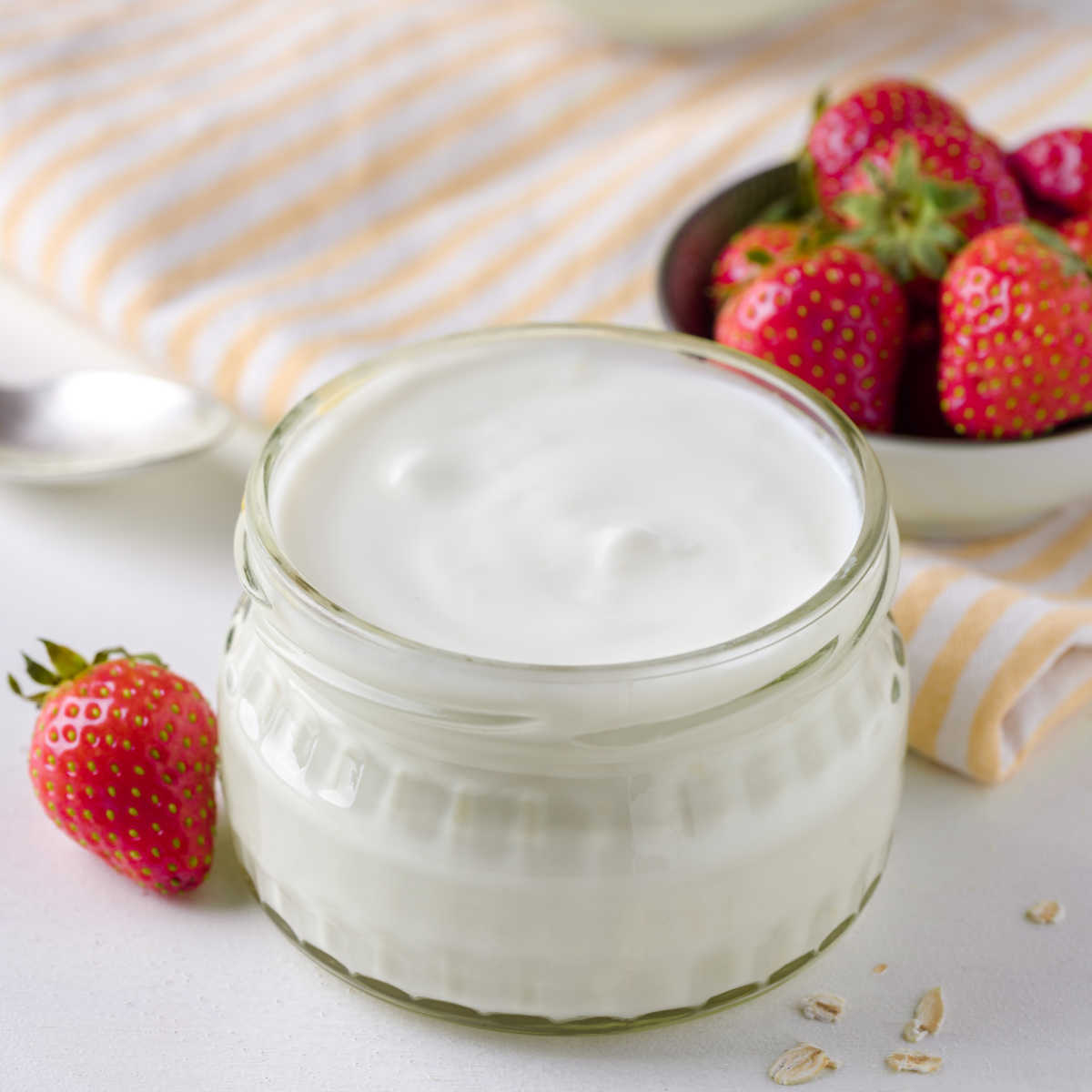
6. Greek Yogurt
Greek yogurt can be used as a healthy butter alternative in pancakes, providing both moisture and protein. Its creamy consistency makes it an ideal substitute, while its tangy flavor adds depth to your pancakes.
To use Greek yogurt instead of butter, replace half the amount of butter in your recipe with Greek yogurt. For example, if your recipe calls for 1/4 cup of butter, use 1/8 cup of Greek yogurt instead. This will help maintain the appropriate texture and moisture content in your pancakes, while also adding a nutritional boost. My Yoghurt & Banana Pancakes Recipe is already made with the ‘yoghurt’ butter replacement and it works great (and taste amazing too!).
- Advantages: nice tangy flavour, moist pancakes, lower in fat (if used plant based yoghurt or fat free)
- Best for: people seeking healthier options
PANCAKE RECIPES
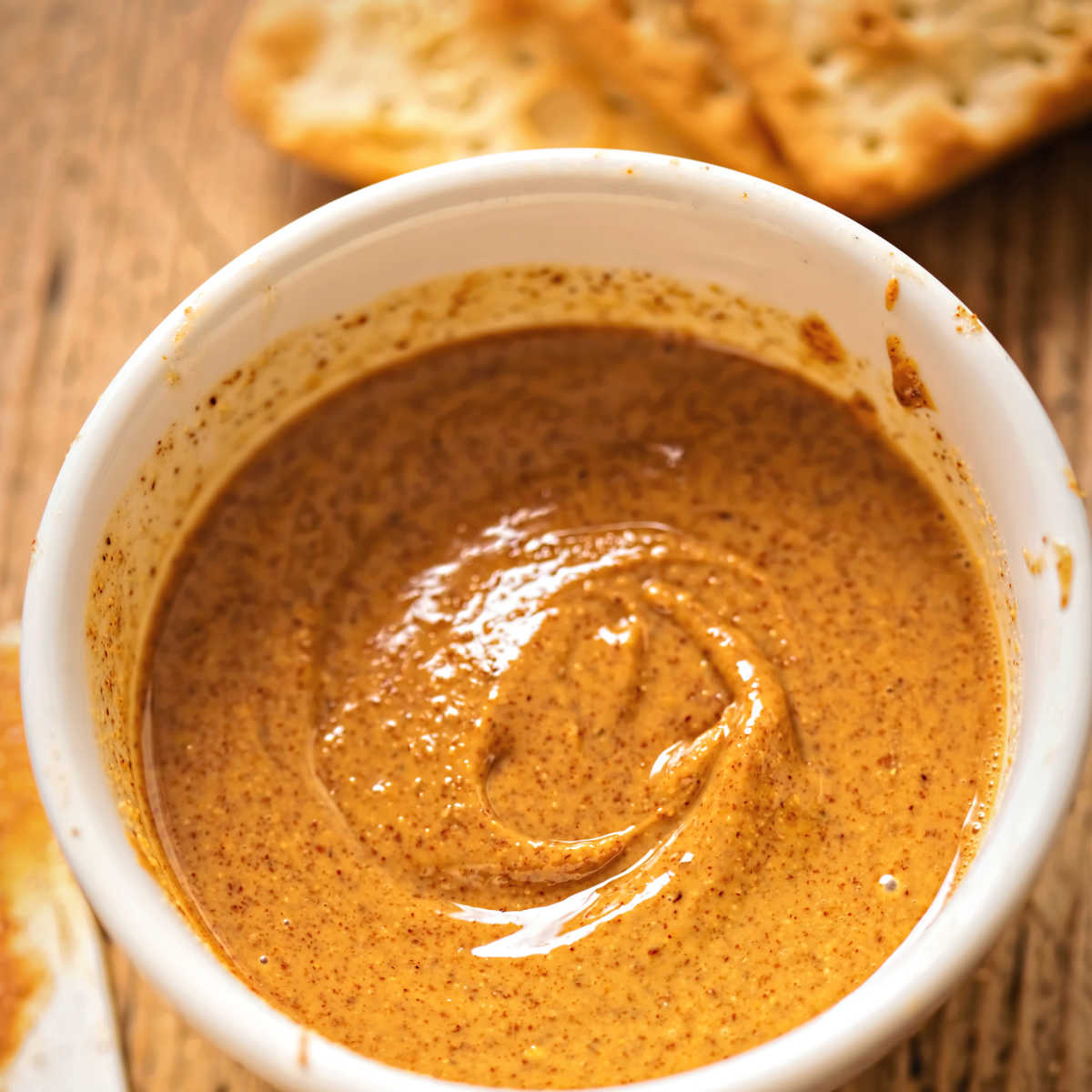
7. Nut Butters
Nut butters, such as almond or cashew butter, can be an excellent alternative to butter in pancakes. They add a unique, nutty flavor and provide a good source of protein, healthy fats, and essential nutrients.
To use nut butters as a substitute, simply replace the butter called for in the recipe with an equal amount of your preferred nut butter. Please note that the texture of your pancakes may be slightly different when using nut butters, as they have a different consistency than butter.
Nut butters are great for traditional pancake recipes or chocolate pancake recipes, because the flavours can be quite strong.
- Advantages: natural sweetness, nutty flavours
- Best for: different flavour pancakes, vegan and dairy free diet
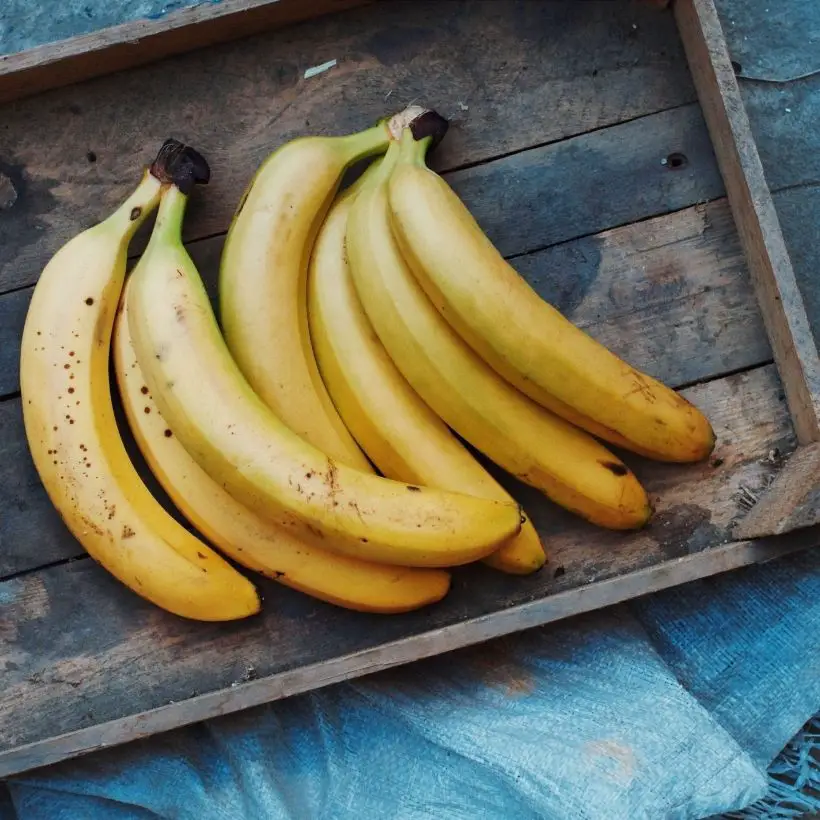
8. Mashed Bananas
Mashed bananas can be a great alternative to butter in pancakes as they provide natural sweetness and moisture.
This substitute is suitable for those who are looking for a healthier, lower-fat option. To incorporate mashed bananas, replace half of the butter with an equal amount of mashed bananas. Make sure the bananas are ripe for the best results – which also makes it an excellent way to use up overripe bananas.
- Advantages: natural sweetness, moist pancakes, lower in fat
- Best for: people seeking healthier options
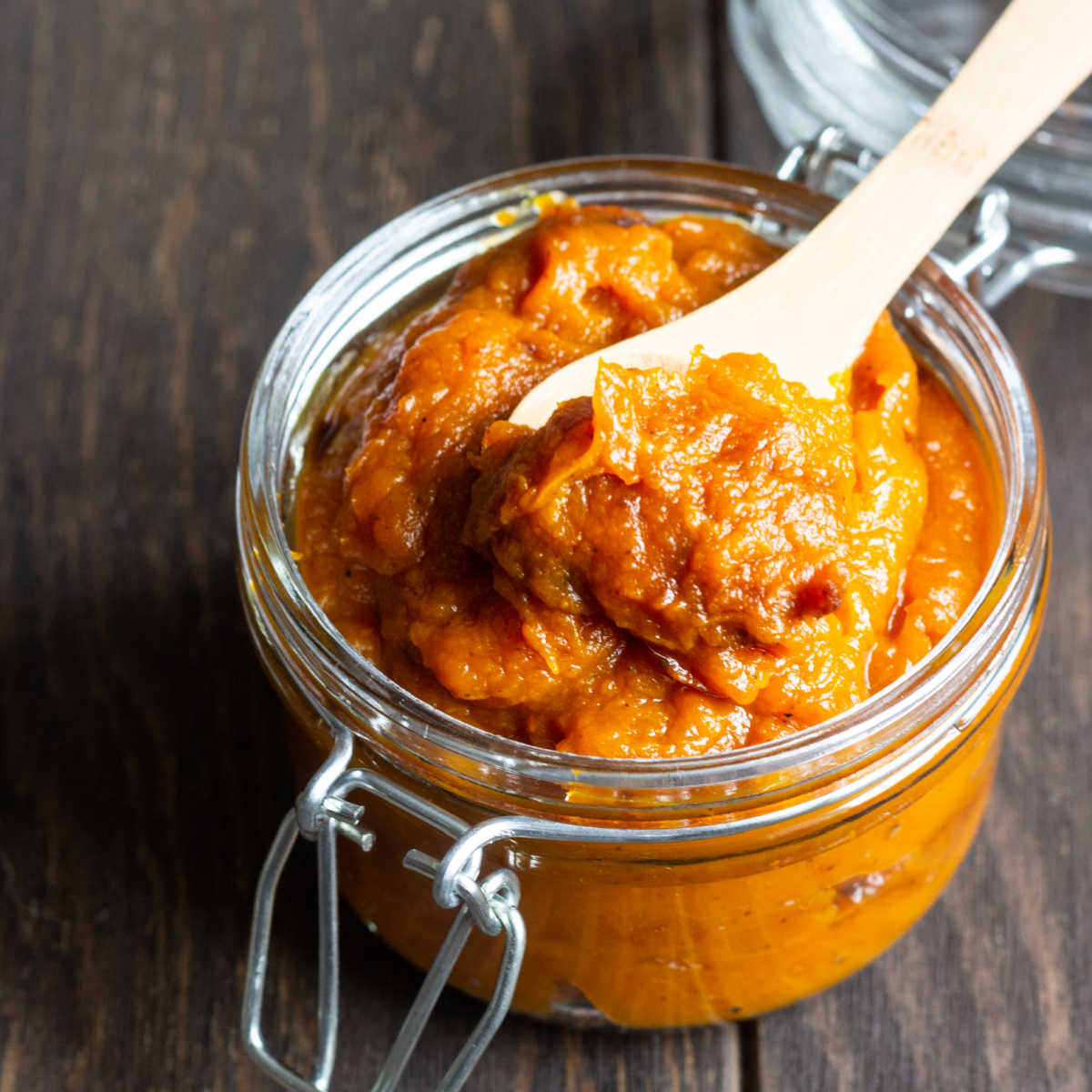
9. Pumpkin Puree
Another unique yet nutritious butter substitute for pancakes is pumpkin puree. It adds a distinct, seasonal flavor while maintaining a moist texture.
To use pumpkin puree in pancakes, replace half of the butter with an equal amount of pumpkin puree. This replacement works well during autumn when pumpkins are abundant, or you can use canned pumpkin puree for year-round availability.
- Advantages: seasonal flavor, moist and nutritious
- Best for: autumn-inspired recipes, pumpkin lovers

10. Double Cream (Heavy Cream)
Double cream is a type of dairy product that is commonly used in British and European cuisine. It is a rich, thick cream that contains at least 48% butterfat, which is higher than the butterfat content in heavy cream or whipping cream.
Double cream is made by skimming the cream off the top of fresh milk and then allowing it to stand for a period of time, which allows the cream to naturally thicken. Double cream is often used in desserts, as a topping for coffee or tea, and to make butter. In the United States, double cream is sometimes referred to as “heavy cream,” but heavy cream in the US typically has a lower butterfat content than double cream.
To replace butter in pancakes with double cream or heavy cream, just use the same amount of cream instead of butter.
- Advantages: 50% equivalent of fat to butter
- Best for: great rich flavour
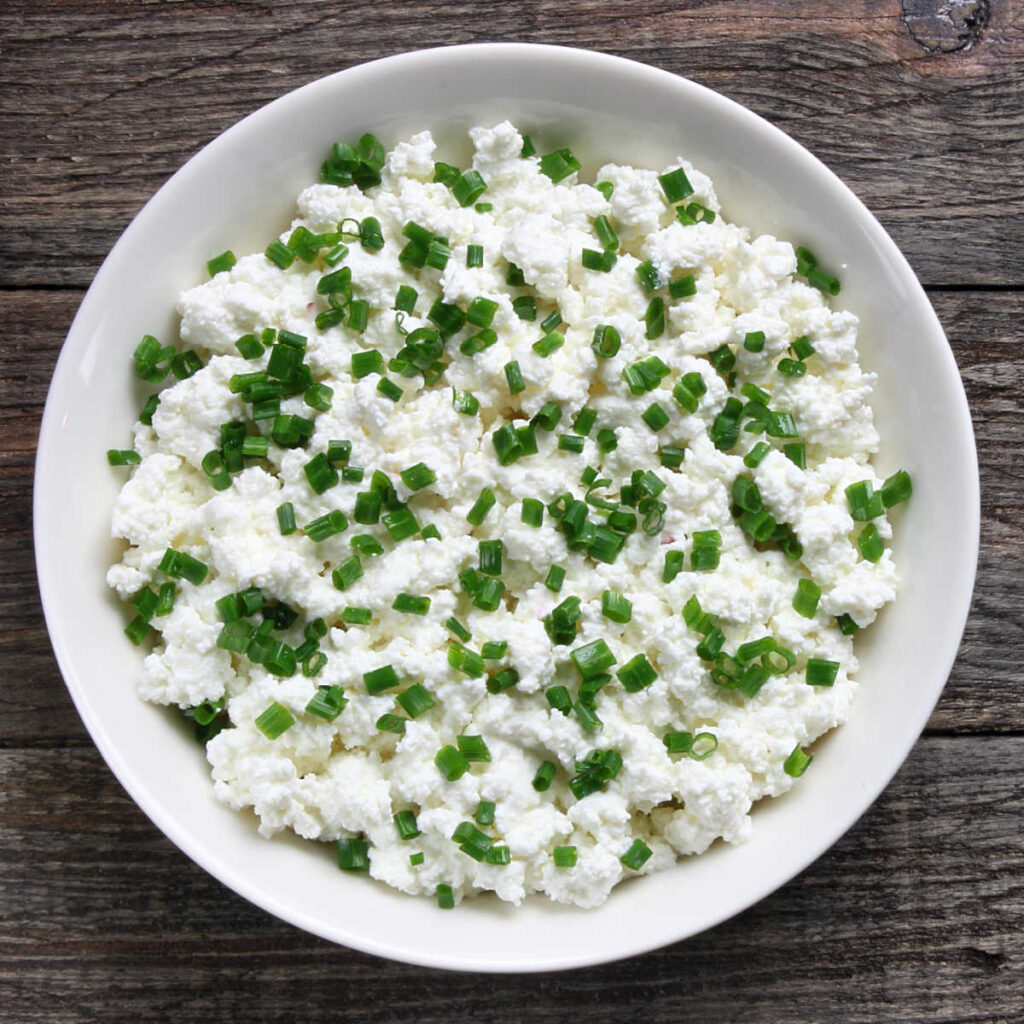
11. Ricotta or Cream Cheese
Ricotta cheese can also serve as a substitute for butter in pancakes, adding a slightly tangy flavor and additional protein.
This replacement is suitable for those looking to create a more protein-rich and satisfying breakfast. To substitute, use half the amount of ricotta cheese for the butter required in your pancake recipe. The result is fluffy and airy pancakes that cater to a more savory taste.
- Advantages: protein-rich, fluffy texture, savory taste
- Best for: protein-focused recipes, savory pancakes
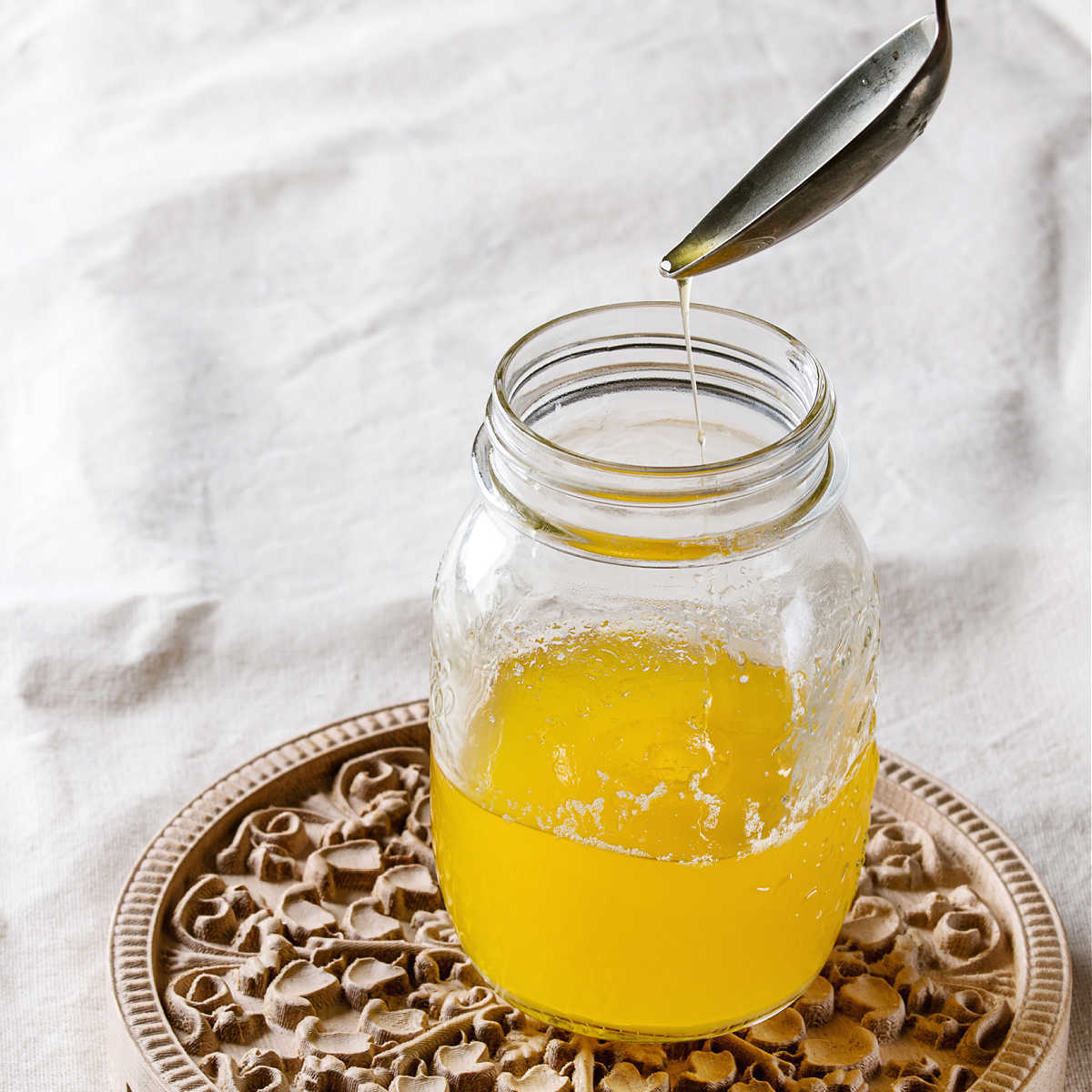
12. Ghee – clarified butter
Ghee is a type of clarified butter that is often used in Indian and Pakistani cuisine. It is made by simmering butter until the water evaporates and the milk solids separate from the fat. The milk solids are then removed, leaving behind a golden, nutty-flavored fat that has a high smoke point and a longer shelf life than regular butter.
Ghee is rich in vitamins A, D, E, and K, and is also lactose-free and casein-free, making it a popular alternative for people with dairy sensitivities.
Ghee can be used in the same way as regular butter in pancakes and has slightly richer flavour and colour than regular butter.
- Advantages: very similar taste to butter
- Best for: keeping the pancake flavour as close to the original recipe as possible

13. Lard
Lard is a semi-solid white fat product that is made from rendering the fatty tissue of a pig. It is most commonly made from the fat of the pig’s belly, back, or kidneys. The process of rendering involves cooking the fat slowly until it melts, and then separating the liquid fat from any remaining solids.
Lard has been used in cooking and baking for centuries, and is a traditional ingredient in many cuisines around the world. It has a high smoke point, which makes it ideal for frying and other high-heat cooking methods.
Lard can be used as a substitute for butter in the pancake batter, but I prefer to use it for frying pancakes. Most of the time lard has a neutral colour and flavour, but it does have a faint aftertaste of animal fat. If you are worried about how the lard is going to taste use only 1/2 of the portion that you are replacing in your pancake recipe (so say instead of 1 tablespoon of butter use 1 1/2 teaspoon of lard)
- Advantages: moist pancakes
- Best for: frying pancakes

14. Leave the butter out completely
I’ve left this option as last, but often this is my default butter substitution – aka don’t bother with the butter, just leave it out!
There is usually a minimal amount of butter in pancakes, so leaving it out won’t change the texture and flavour of your pancakes so drastically that you won’t be able to eat them. You might need to add a little bit more milk to compensate for the liquid in butter or you can use a large egg instead of medium, which will help too.
- Advantages: no need to find other butter substitutions
- Best for: budget friendly pancakes, dairy free and vegan diet

Frequently Asked Questions
Why put melted butter in pancake batter?
Melted butter is often added to pancake batter for several reasons:
- Flavor: The fat in butter adds richness and flavor to the pancakes.
- Moisture: The fat in butter helps to keep the pancakes moist and prevents them from drying out when they cool down.
- Texture: Melted butter can help to create a light and fluffy texture in pancakes.
- Browning: The milk solids in butter help pancakes to brown and develop lovely crispy edges.
- Emulsification: When melted butter is added to the batter, it can help to emulsify and blend the ingredients together, creating a smoother and more consistent batter.
Should I use salted butter or unsalted butter for pancakes?
You can use both salted or unsalted butter, but you will need to adjust the amount of salt in your pancake recipe if you are going to use salted butter.
I usually use unsalted butter for pancakes because I can control how much salt I want to add to my pancakes batter. I only add a little pinch of salt to most of my pancake recipes.
Salted butter already contains salt, so using it in a pancake recipe could result in the pancakes being too salty. However, if you only have salted butter on hand, you can still use it in your pancake recipe, but you may need to adjust the amount of salt in the recipe accordingly (or don’t add any extra salt in).
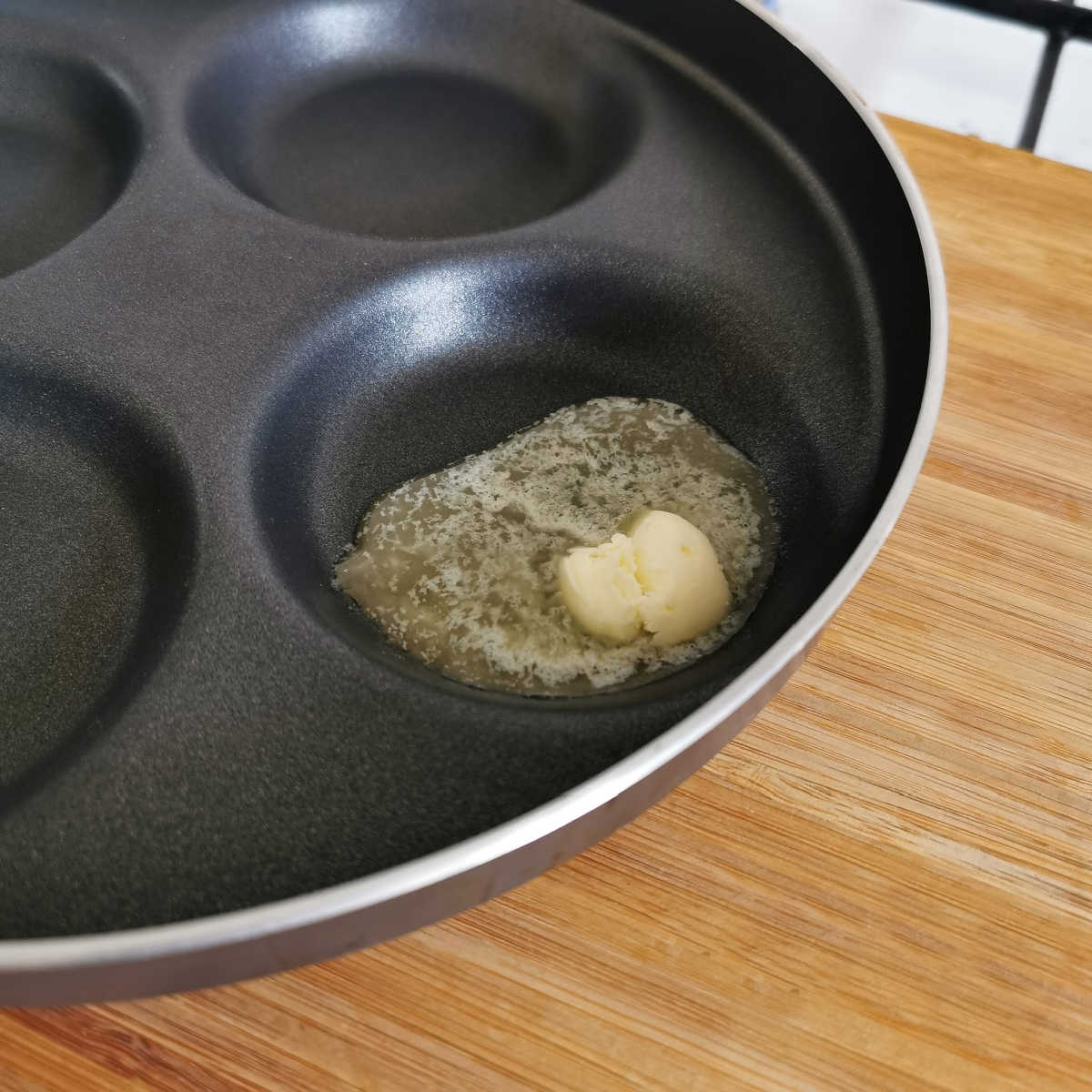
How to cook pancakes without butter or oil?
I find that it’s quite tricky to cook pancakes without sticking if you are not using some sort of fat, butter or oil to grease the frying pan.
But you can cook pancakes without butter or oil, if you use non-stick frying pan, a silicone baking mat, or a nonstick griddle. You will need to be careful and only heat the frying pan on a medium to medium high temperature to cook your pancakes – any hotter than that might burn the pancakes.
You can use anything that has fat or grease to lightly grease your frying pan – I’ve used coconut oil, any kind of oil (not extra virgin olive oil, because that one tend to smoke), leftovers from butter from a butter wrapper (I save them in the fridge for exactly this reason). Nut butters are not suitable for greasing frying pans, as they will just burn and turn gritty.
If I don’t have enough butter to add to my pancakes and don’t have anything to grease the frying pan, I always save the butter for the frying pan as you can easily replace the butter in the pancake batter or leave it out completely, but it’s more difficult to find something suitable to grease the frying pan.
This blog post was originally written on 22 June 2023 and last updated on 22 June 2023





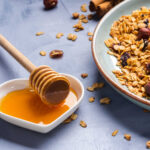

Leave a Reply